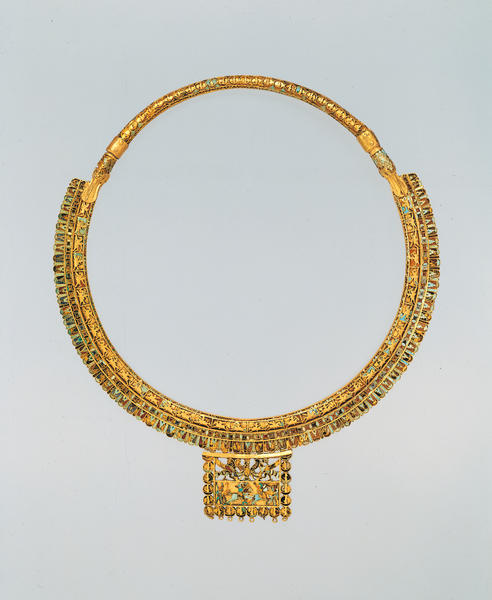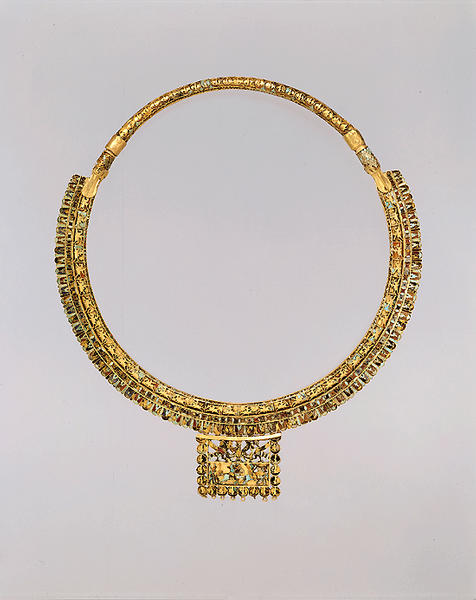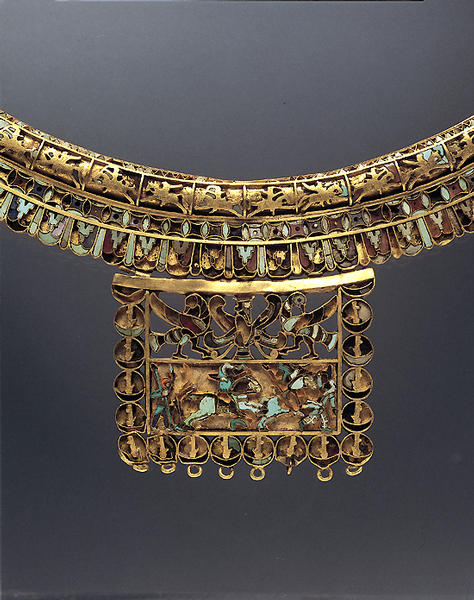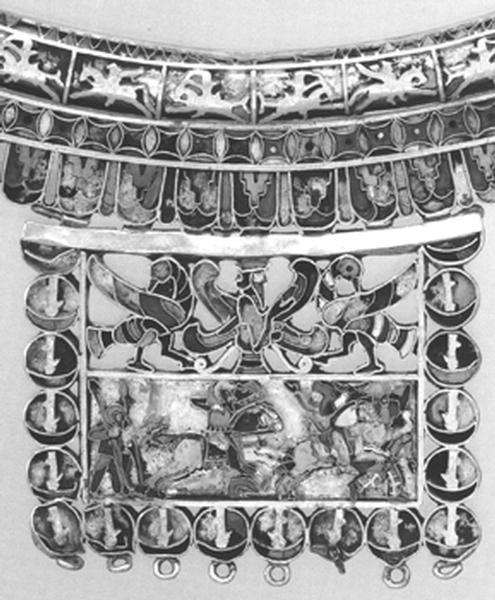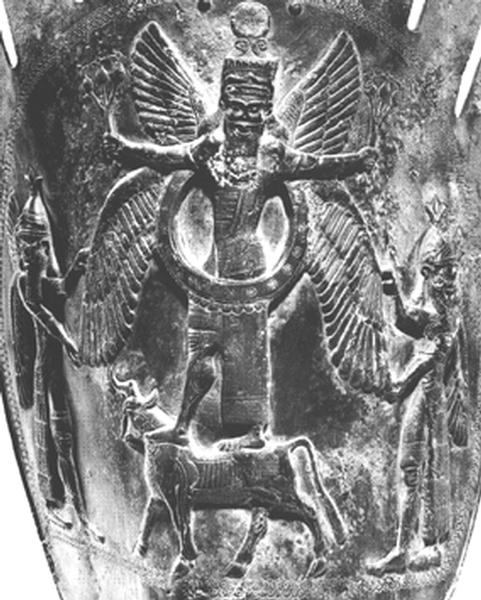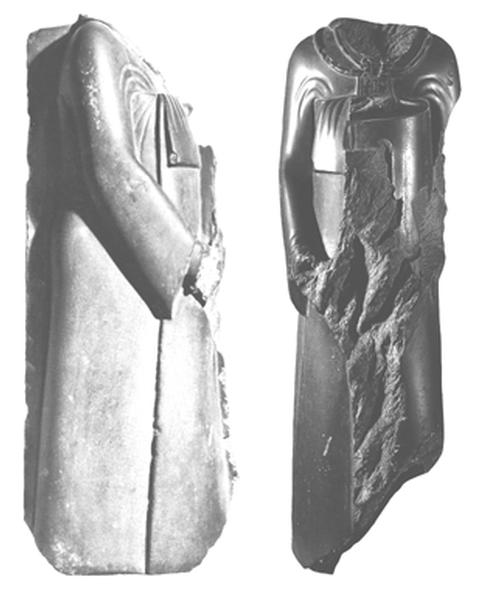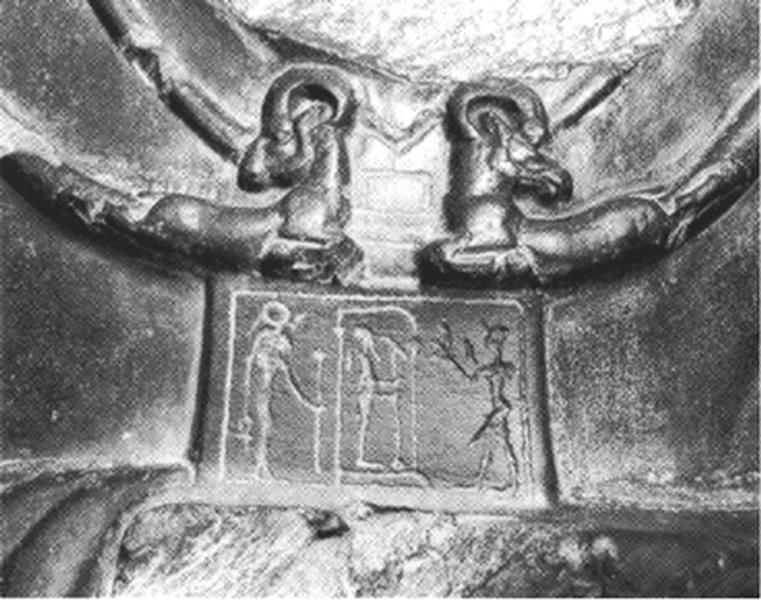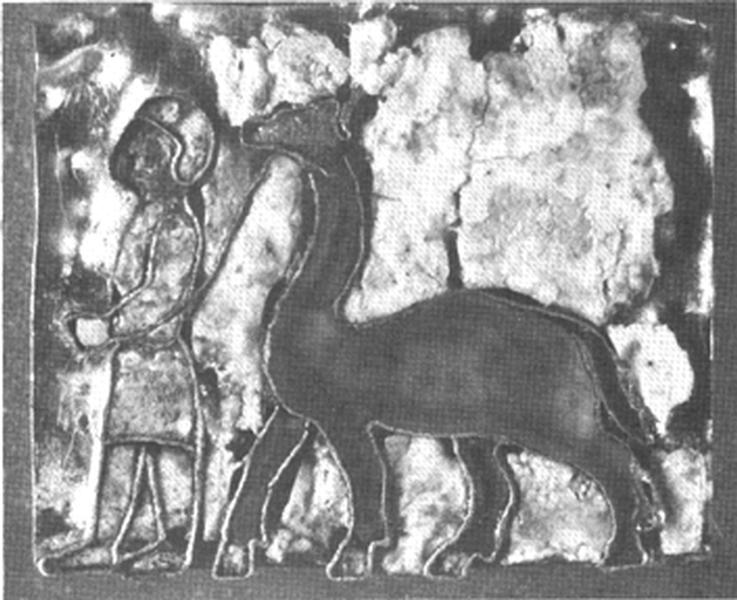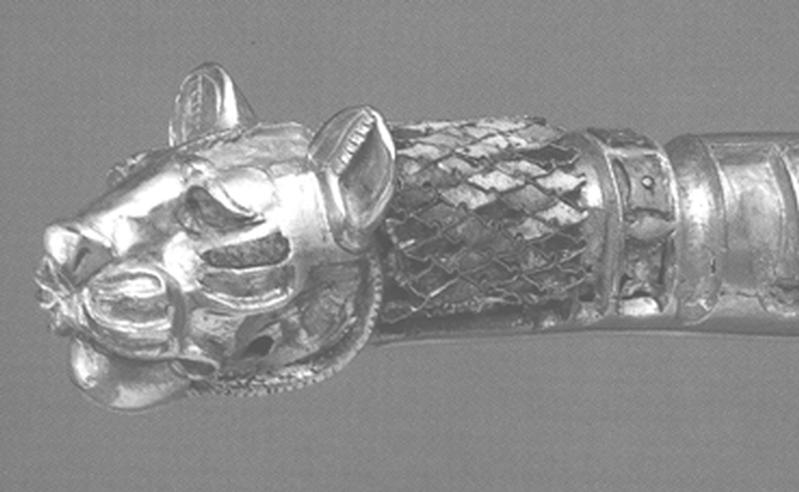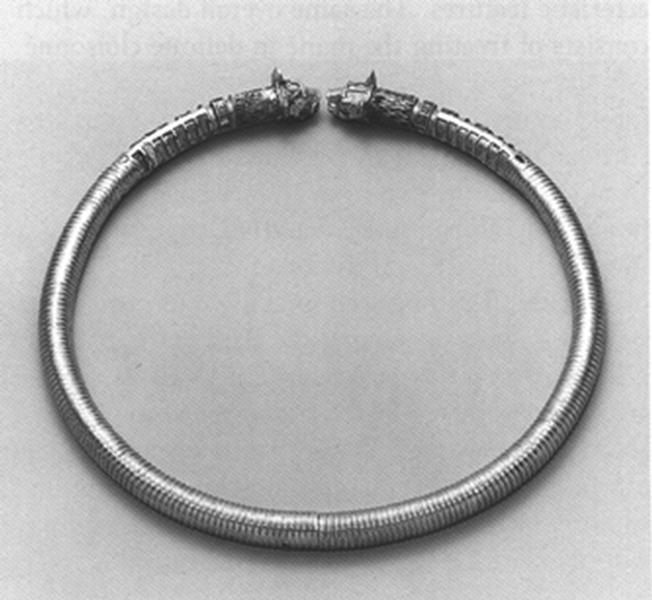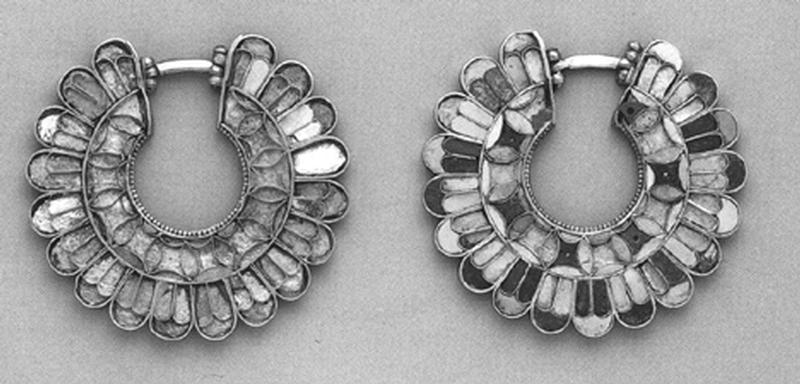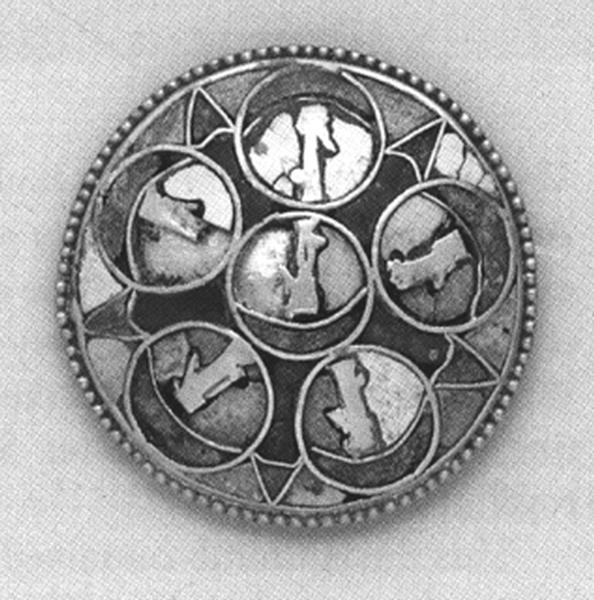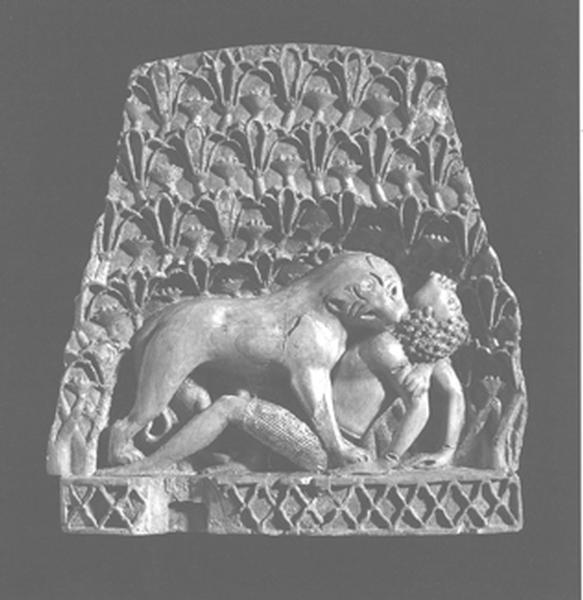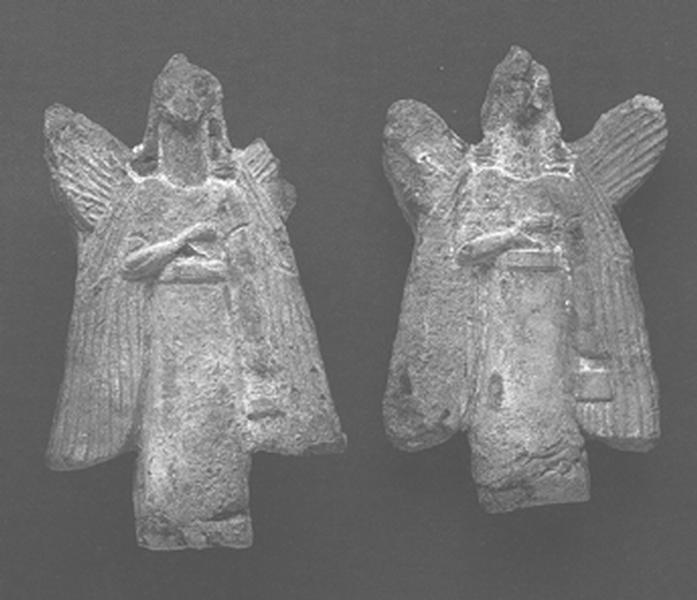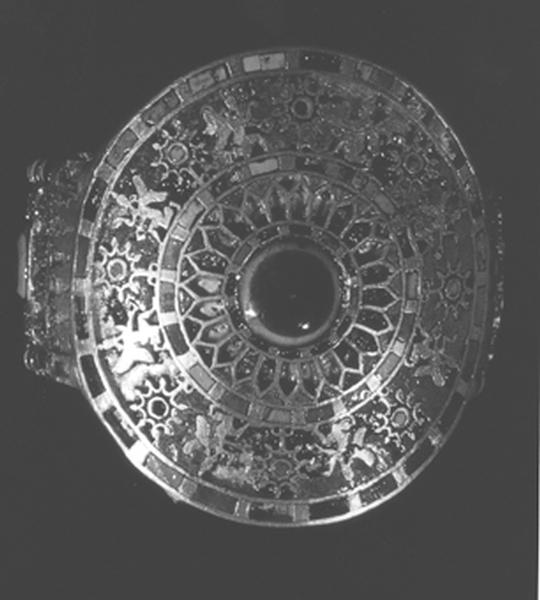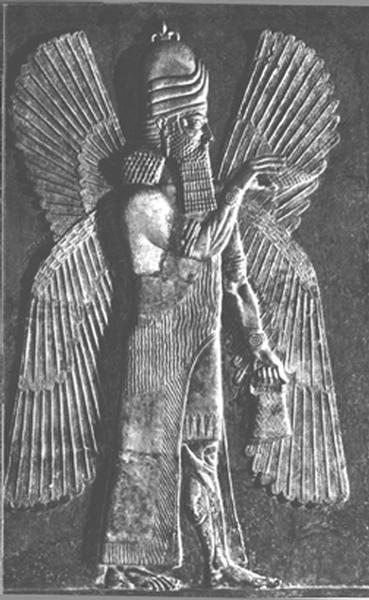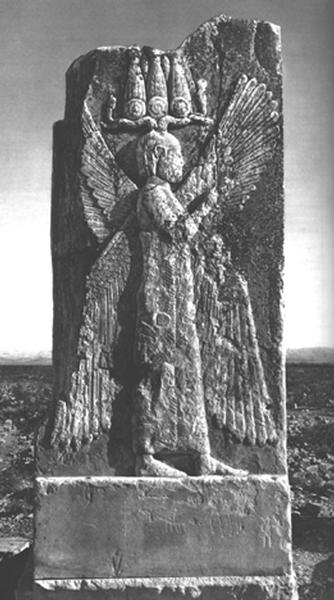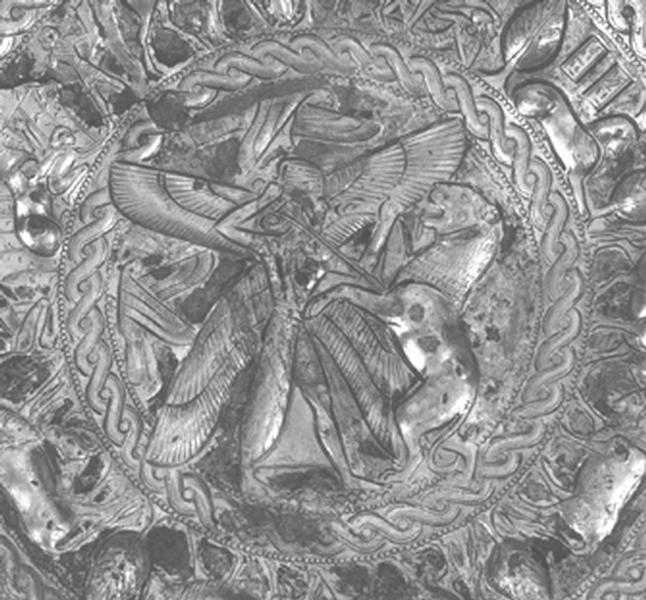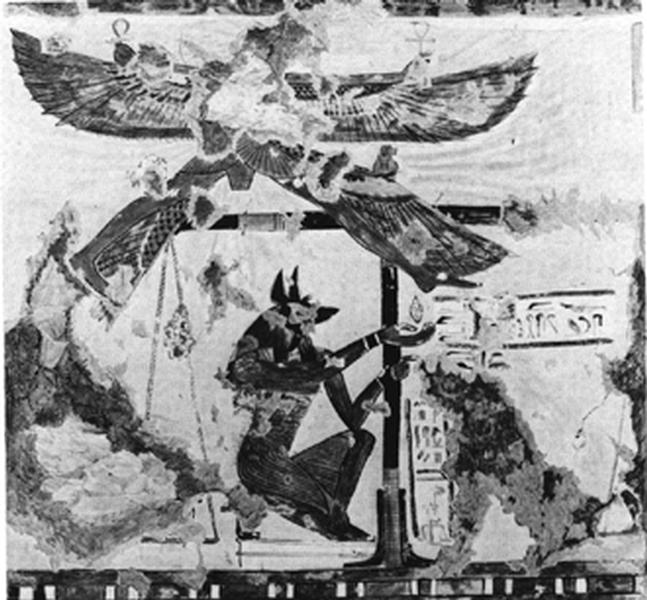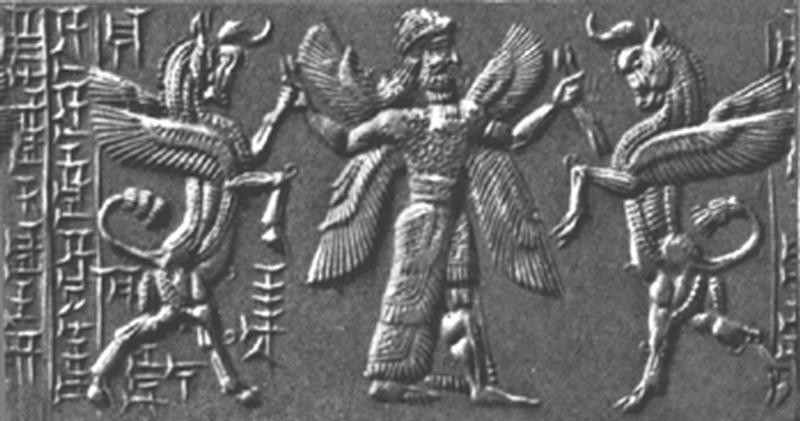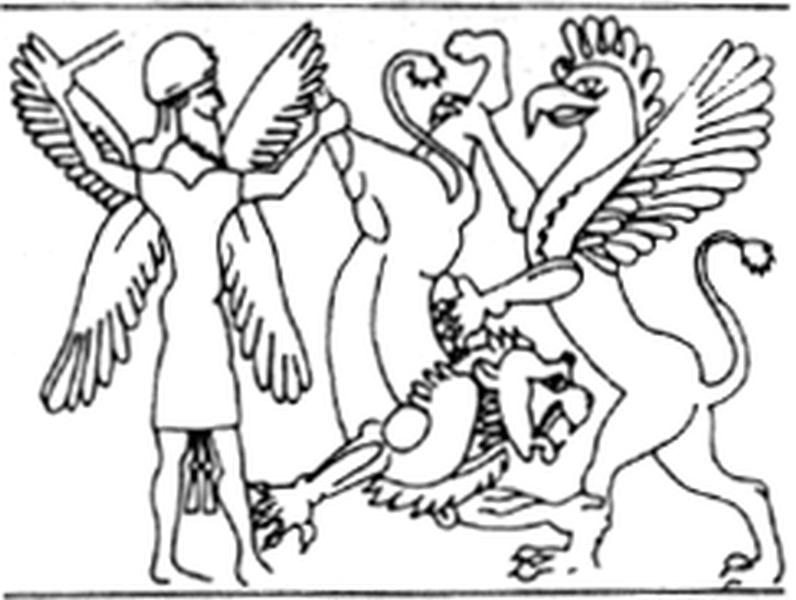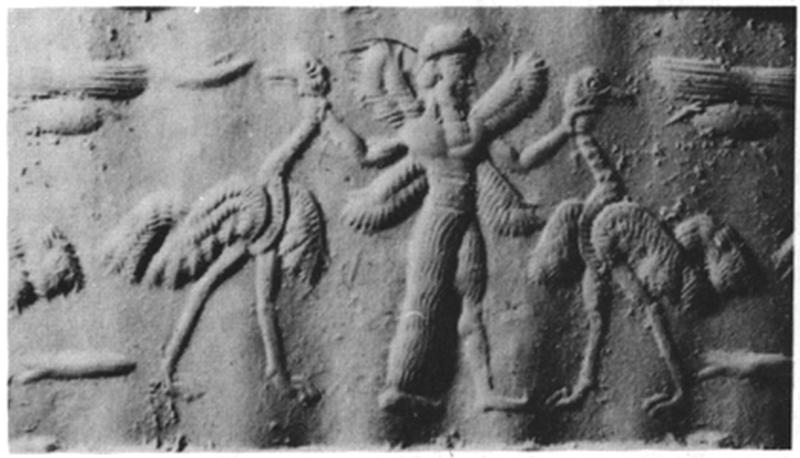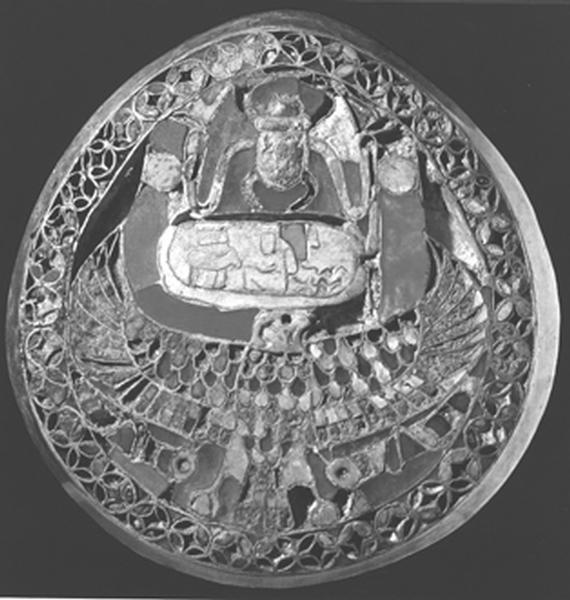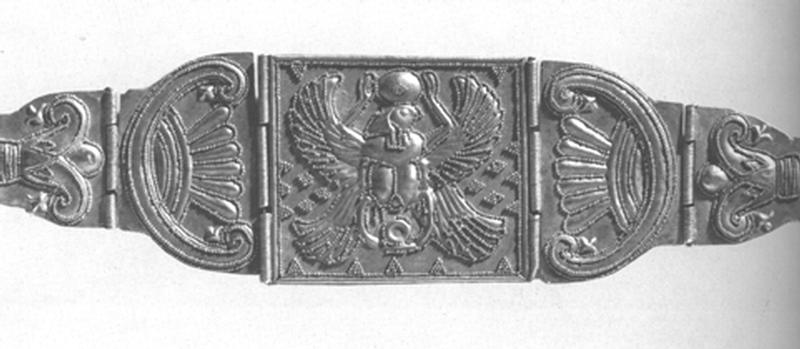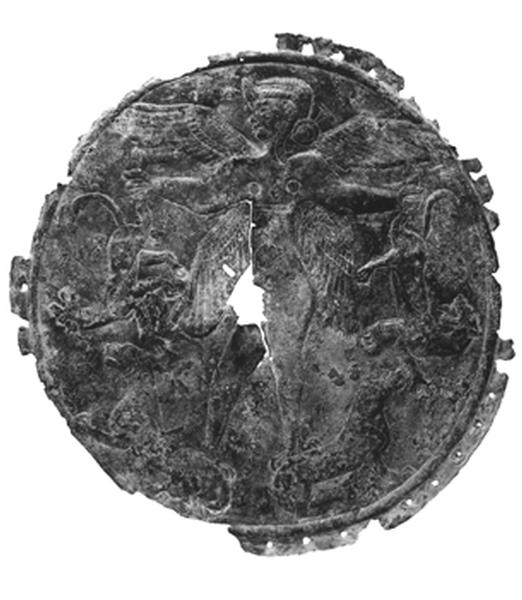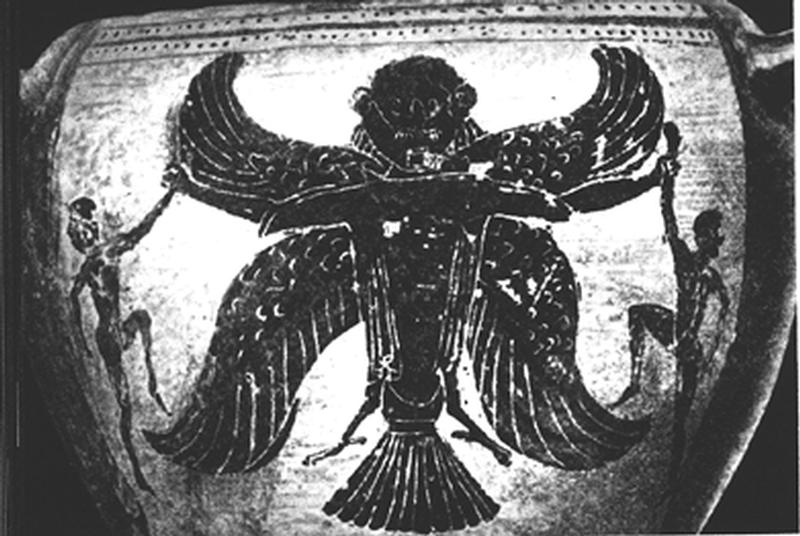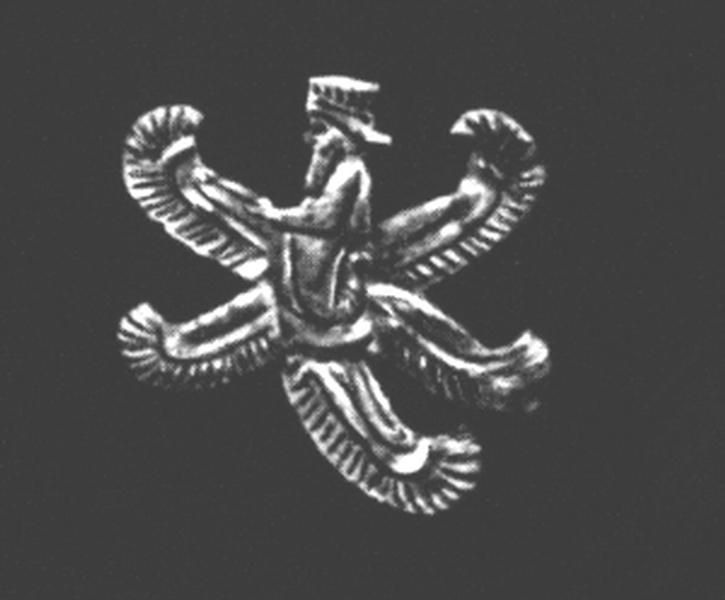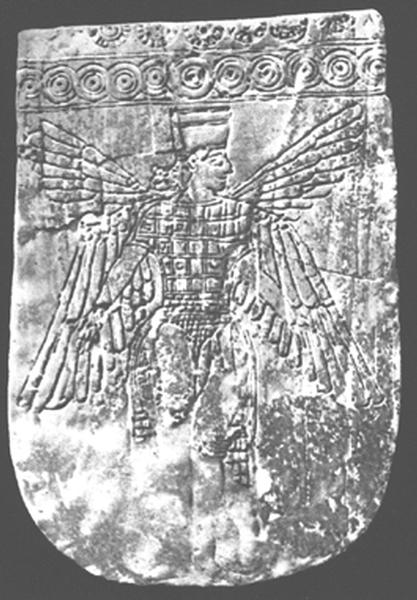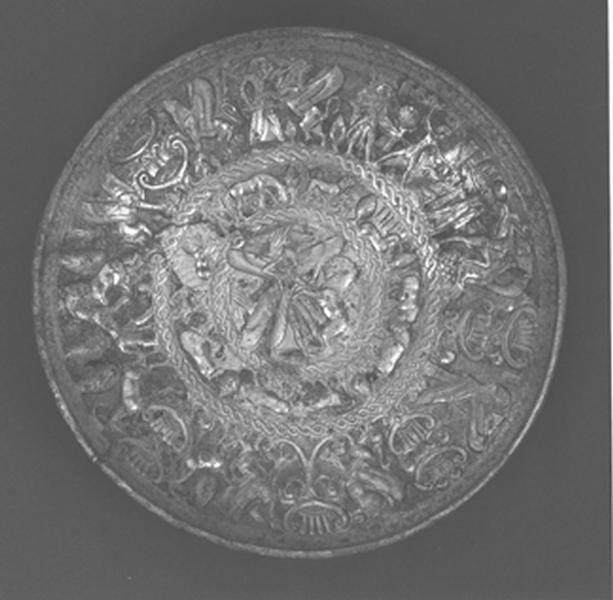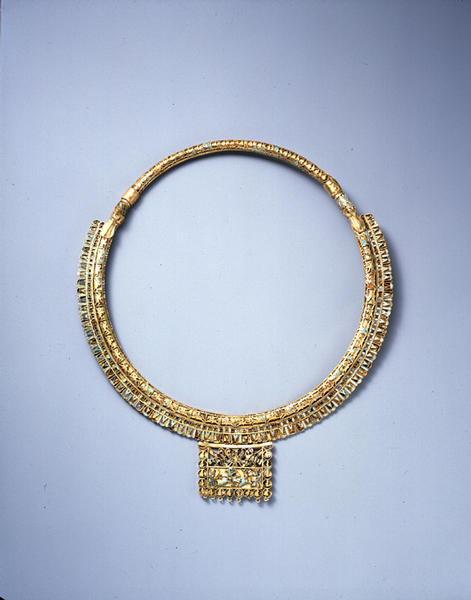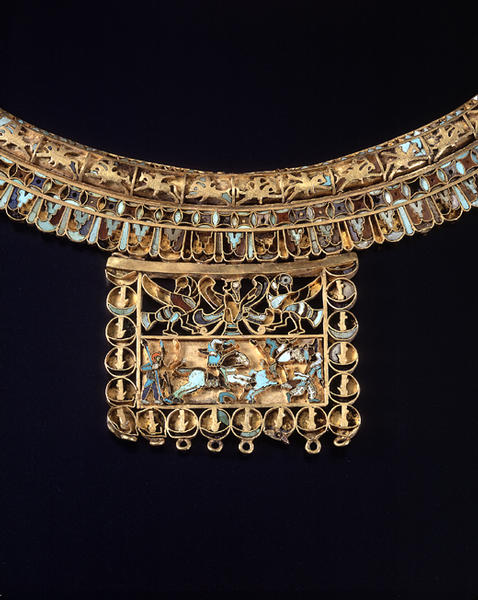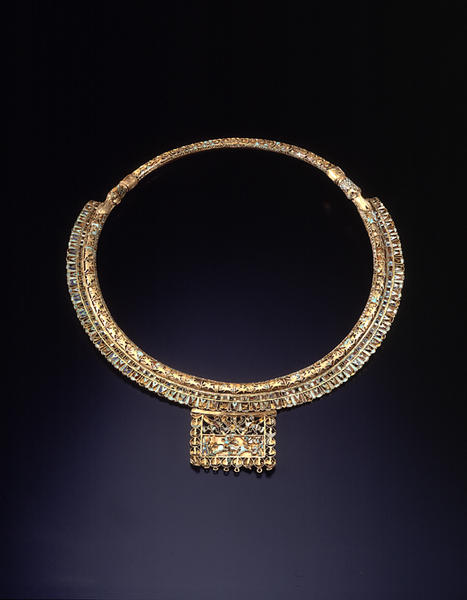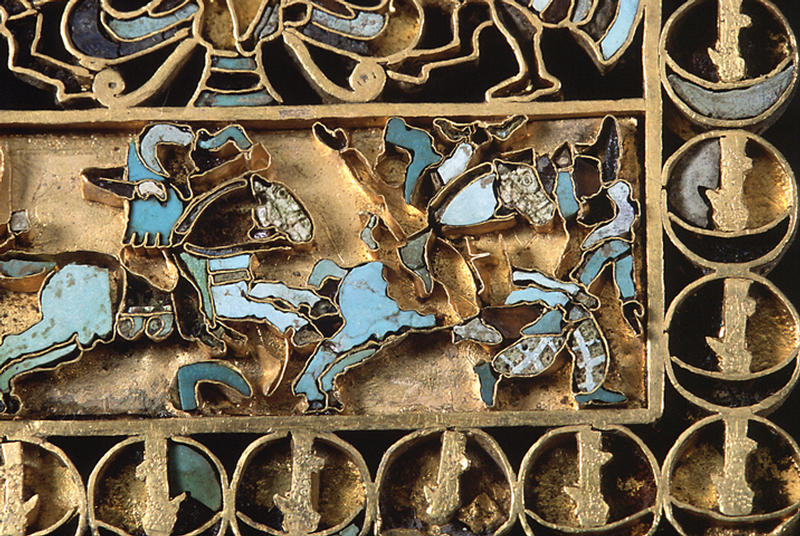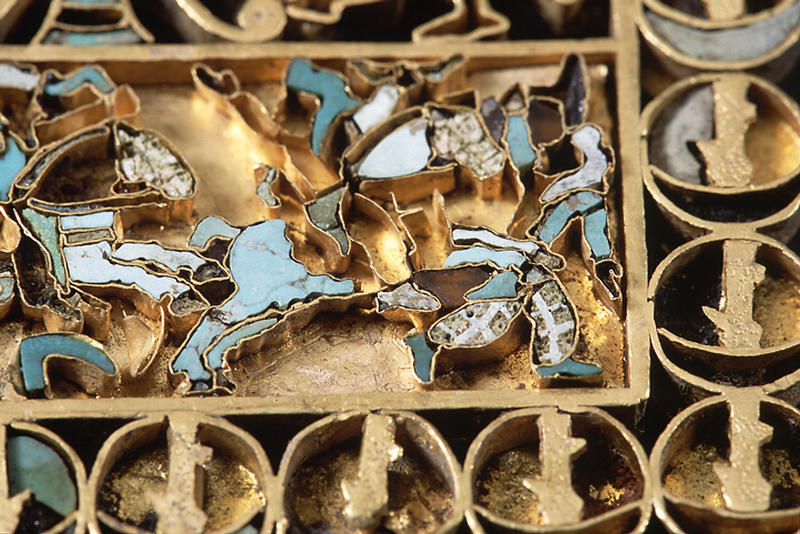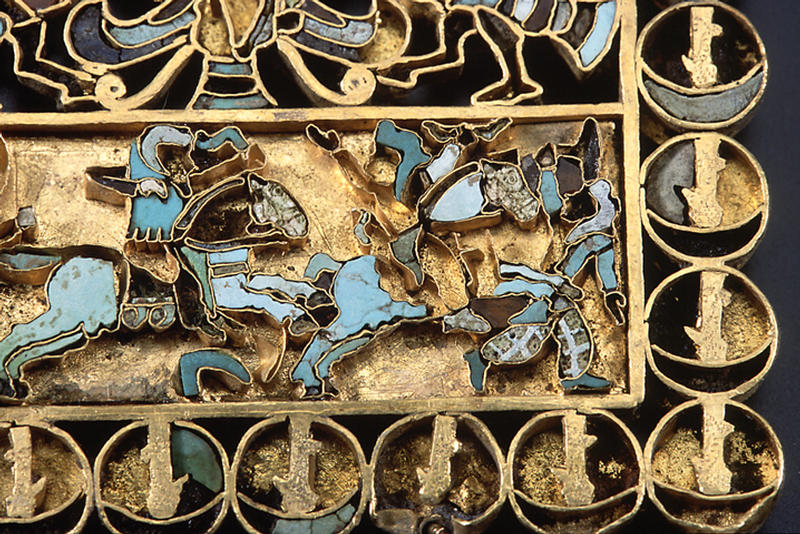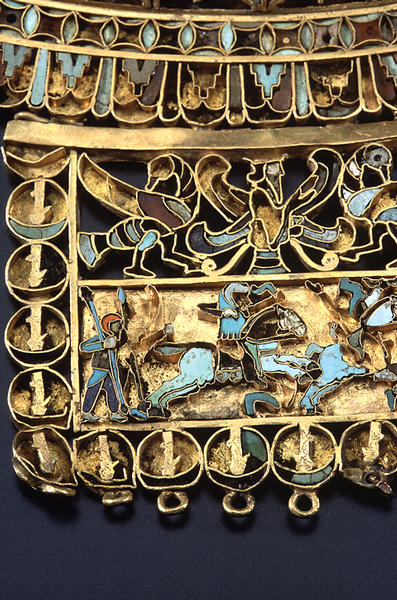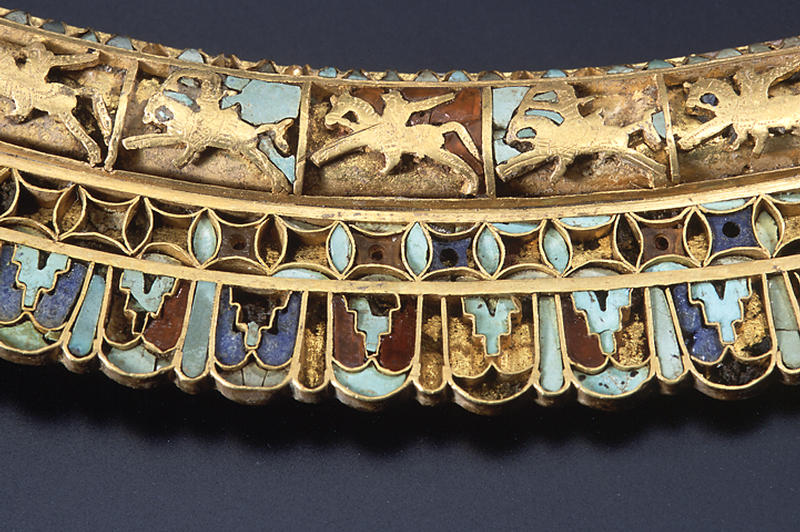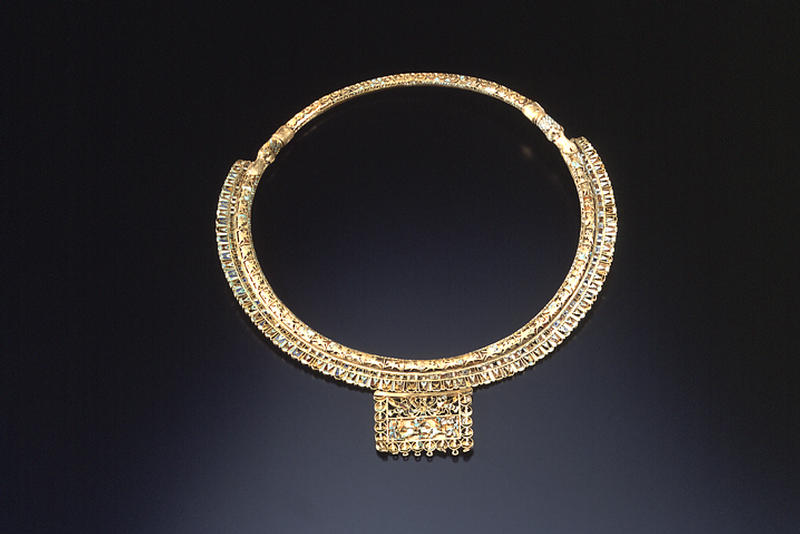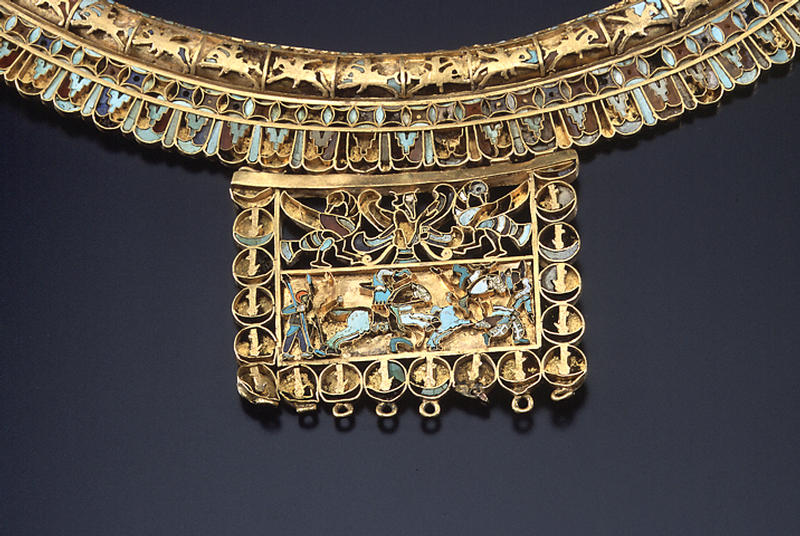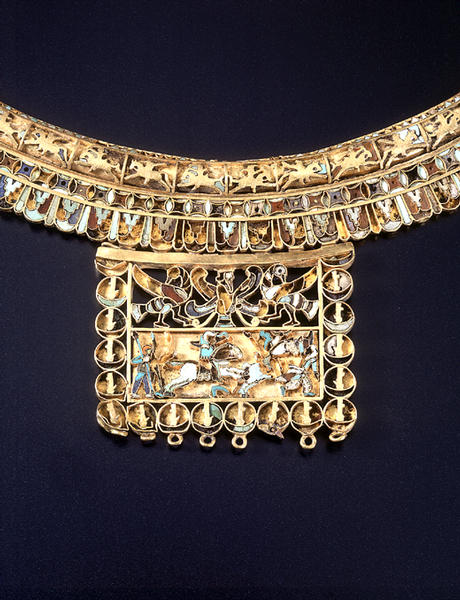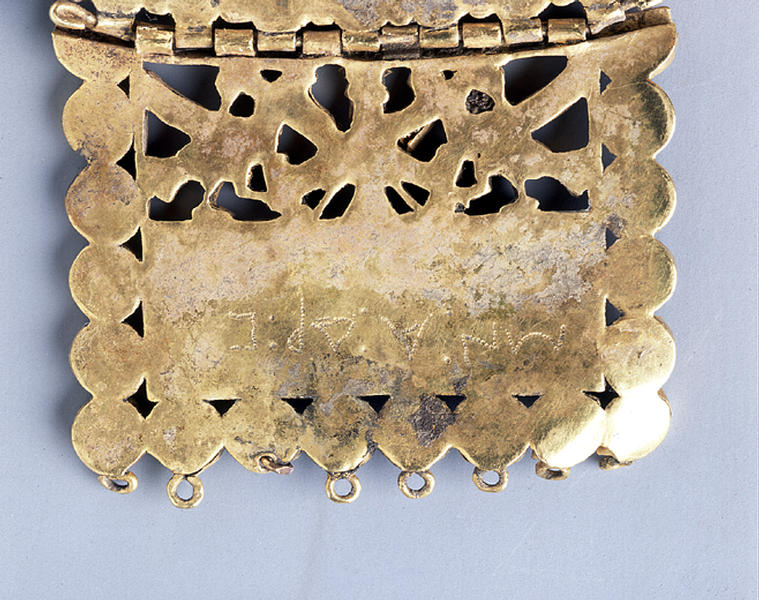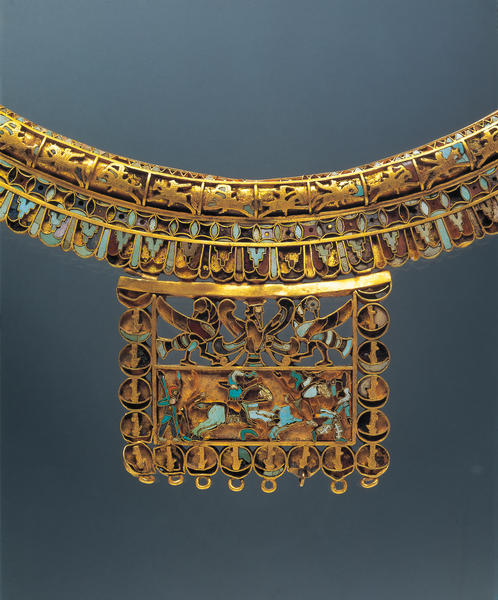Torque (Pectoral) with a Pendant
- Achaemenid Period
- 4th century B.C.
- Gold, cloisonne inlay of lapis lazuli, turquoise, carnelian, glass
- H-26 W-25.7
Catalogue Entry
This pectoral is the most splendid example of Achaemenid court jewelry presently known. It comprises three different parts: a collar-like front section that is flat; a long, clasp-like, tubular element that attaches at duck's-head terminals; and a pendant hinged to the front.
According to ancient sources, the Achaemenid "Kings of Kings" sometimes honored their followers with jewelry. These gifts befitted not only the receiver's rank but also symbolized his loyalty to the ruler.1 The battle scenes on this torque and pendant suggest they were made for a high-ranking male official, and definitely not for a woman. This was an idea entirely alien to Greek customs: the quantity of jewelry worn by high-ranking dignitaries in an Achaemenid battle-line gave a splendid and sparkling impression, prompting Alexander the Great at the battle at Issos to misinterpret the shining gold of his Asiatic opponents as a sign of their effeminacy and to spur his troops on with the expectation of rich booty.2
Although almost entirely composed of Achaemenid motifs, this pectoral has undeniable Egyptian affiliations.3 The type of the pendant finds a parallel on the statue of an Egyptian official of the Achaemenid era who wears an Egyptian pectoral depicting Egyptian deities together with a Persian torque, a piece he was allowed to wear by explicit permission of the king.4 The cloisonn technique of the Shumei pectoral is likewise attested in Egyptian art; a famous inscription of Darius the Great from Susa mentions Egyptian goldsmiths being in Achaemenid service.5 Even such a detail as the tiny foliage of Egyptian Nymphaea nelumbo with turned-up tips, which borders the lower register on the torque, was widely used in Achaemenid ateliers and occurs in a technically quite similar execution on a pair of late Achaemenid earrings from Susa.6 On the torque the formerly Egyptian motif was combined with typical Near Eastern "stepped embattlements," which function as central veins of the leaves. In contrast to Near Eastern examples, though, this frieze has narrow interstices between the individual leaves, a detail most likely drawn from Greek "egg-and-dart" friezes.7 Therefore, this unobtrusive ornament likely reveals the decorative heritage of no fewer than three cultures. The band of rectangles with indented contours in the register above also has a perfect parallel on the above-named earrings from Susa.
Unfortunately Achaemenid art is extremely difficult to date, but in this case the technical analogies suggest a late Achaemenid attribution, to the fourth century B.C., before the collapse of the empire.8
The most extraordinary elements of this piece are the figural representations. In the upper section of the pendant, between two ducks, is a winged god that is half-human and half-bird, a type of imagery usually associated with Ahura Mazda. Protomes of a similar deity without wings appear in the tiny crescent medallions which border the pendant and the tubular upper part of the torque itself.9 Originally the central Ahura Mazda was abundantly decorated with glass inlays, and the artist's brilliance is evident in the use of a millefiori technique for the representation of the god's face.
The same technique was used in an even more spectacular fashion to characterize the Persian trappings10 and the heads of the horses in the pendant's lower register. This miniature frieze depicts a battle between two horseman and two infantrymen. The artist took care to differentiate the riders not only by their weaponry and horses but even by their saddle equipment. The high rank of the rider on the left is borne out by his infantry guards behind him, who have little balls or "apples" on the lower end of their spears. Such "apple-bearers" (melophoroi) were members of the royal Persian guard, who were used even by Alexander after his conquest of the Persian Empire.11 This rider gallops to the right, shooting an arrow at a fleeing opponent. As part of his Persian costume is a rare representation of an Achaemenid cuirass, with its characteristic high neck protector.12 The skirt of the cuirass made of straps is obviously derived from Greek armor. Other elements of his equipment, such as the notched lower border of his saddle cloth and the ram-head type of horse, reflect Achaemenid traditions.13
The fleeing horseman throws up his right arm in despair. He is represented without a cuirass, and the head of his horse shows the characteristic "Arabian dish." The rider's passionate gesture recalls Graeco-Persian rather than truly Near Eastern art, clearly demonstrating the intrusion of Greek elements.14 The action of an infantryman at the far right is difficult to decipher. Is he fleeing, or is he aiming an Achaemenid battle axe (?) at the head of the fleeing rider?
On the third register of torque are repeated duos of tiny golden horsemen that the goldsmith similarly differentiated between a fleeing rider with his right arm outstretched and an opponent shooting an arrow at him. On the pendant, the tips of both the horses' tails are covered. On the torque, while the horse of the victorious warrior clearly has the bound tail of the Achaemenids and the already introduced ram's head, once again the head of the horse of the pursued is different and its tail is not bound. Again, victor and vanquished are carefully set apart, and the one who flees is clearly an Asiatic but is "less Persian." Could this be a reference to a civil war?
In contrast to the West Asian aspect of the figural representations is an inscription in Greek of its weight on the back of the pendant.15 This suggests that the Shumei torque was at some time in the possession of a Greek. Conversely, every known object that has appeared on the art market and has been linked to this torque is Achaemenid in style. Are we dealing with a Greek who received a torque and bracelets (cat. no. 39) from an Achaemenid king, a man who dressed at least from time to time in an Asiatic manner a
Catalogue Entry
This elaborate gold torque (pectoral) comprises three different parts; a flat collar-like decoration on the front; a long, clasp-like, tubular element that attaches at duck's-head terminals; and a pendant hinged to the front. All surfaces are inlaid with superb designs made of precious gems and glass. The center of the top level of the pendant depicts the face of a god. The left edge of the lowest rank shows the faces of two warriors, two horse heads, and horse harness. The right edge has an image of a soldier. These figures, and the pants worn by the soldier on the right are depicted in extremely detailed mosaic glass patterns, which reveal superior technical achievements.
Catalogue Entry(Bac#033)
ca. 4th century B.C.
Gold, turquoise, carnelian, lapis-lazuli, glass
Torque: L. 26.0 cm, W. 25.7 cm
Pendant: L. 4.5 cm, W. 6.0 cm
[see p. 207]
Torque (Pectoral) with a Pendant Depicting a Battle
This combination of necklace and pendant is quite extraordinary. Such a splendid treasure could only have been made in Persia, unifier of the ancient Orient. Likely it was ordered by a Persian and made in a workshop by Greek and Egyptian craftsmen. Pendant, front, collar-like necklace, and back neck clasp are rich with designs evoking fortune in battle, long life, and happiness. The inscription on the back of the pendant tells that it was the treasure of Greeks from the Age of Alexander onward.
